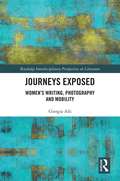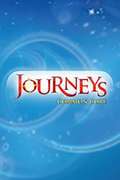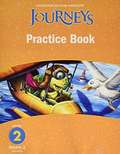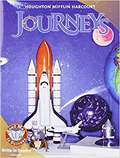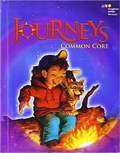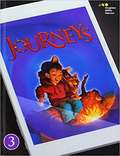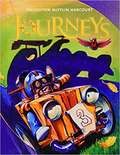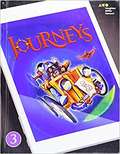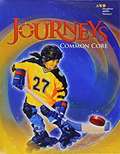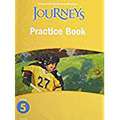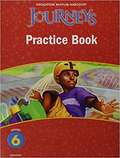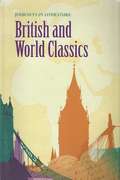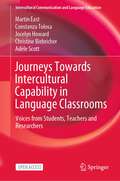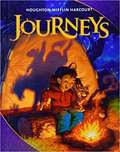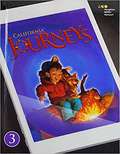- Table View
- List View
Journeys Common Core, [Grade 2], Unit 1, Decodable Readers
by Houghton Mifflin Harcourt Publishing CompanyNIMAC-sourced textbook
Journeys Common Core, [Grade 2], Unit 2, Decodable Readers
by Houghton Mifflin Harcourt Publishing CompanyNIMAC-sourced textbook
Journeys Common Core, [Grade 2], Unit 3, Decodable Readers
by Houghton Mifflin HarcourtNIMAC-sourced textbook
Journeys Common Core, [Grade 2], Unit 4, Decodable Readers
by Houghton Mifflin HarcourtNIMAC-sourced textbook
Journeys Common Core, [Grade 2], Unit 5, Decodable Readers
by Houghton Mifflin HarcourtNIMAC-sourced textbook
Journeys Common Core, [Grade 2], Unit 6, Decodable Readers
by Houghton Mifflin HarcourtNIMAC-sourced textbook
Journeys Exposed: Women’s Writing, Photography, and Mobility
by Giorgia AlùJourneys Exposed: Women's Writing, Photography, and Mobility examines contemporary literature written by women that are all in different ways related to Italy. It argues that photography provides women with a means to expose aspects of their nomadic self and of the others’ mobile lives within and beyond the writing process. By resorting to the visual, women individualistically respond to forms of hegemonic power, fragmentation, displacement, loss and marginality, and make these experiences key to their creative production.
Journeys Grade 2 Volume 1
by Houghton Mifflin HarcourtWith Common Core-based instruction integrated into every unit and lesson, Journeys provides the resources needed to plan and assess effectively, as well as teach and engage your students. Teacher and student resources are available in print, online, and through mobile applications that provide anytime, anywhere access to program resources and materials.
Journeys Grade 2 Volume 2
by Houghton Mifflin HarcourtVolume 2 of the 2 volume set of the Common Core Student Edition which features vocabulary, comprehension, grammar, writing instruction pages, and the Anchor Text as well as a Connected Text for each lesson.
Journeys Grade 2, Volume 2: Practice Book
by Houghton Mifflin HarcourtReading textbook for 2nd graders.
Journeys Grade 3 Volume 1
by Houghton Mifflin HarcourtJourneys: Common Core: Language Arts Textbook
Journeys Grade 3 Volume 1
by Houghton Mifflin Harcourt"Journeys is a research-based, comprehensive English Language Arts program developed by literacy experts and backed by proven results"--Program Consultants page, ii in Teacher's editions.
Journeys Grade 3 Volume 1
by Houghton Mifflin Harcourt Publishing Company StaffJourneys: Common Core Student Edition Volume 1 Grade 3 2014
Journeys Grade 3 Volume 1
by Houghton Mifflin Harcourt StaffJourneys is a research-based, comprehensive English Language Arts program developed by literacy experts and backed by proven results.
Journeys Grade 5
by Houghton Mifflin HarcourtJourneys is a research-based, comprehensive English Language Arts program designed to provide solid instruction that is clear and focused with realistic pacing and manageable resources.
Journeys Grade 6: Practice Book
by Houghton Mifflin HarcourtJourneys: Practice Book Consumable Grade 6
Journeys In Literature British and World Classics
by Tim Mansfield Stephanie Shaw Joel Storer Elia Ben-Ari Mary DesmondJourneys In Literature British and World Classics by Tim Mansfield, Stephanie Shaw, Joel Storer, Elia Ben-Ari, and Mary Desmond.
Journeys NCC Grade 4 (Student Edition)
by Houghton MifflinJourneys NCC Student Edition Grade 4 by Houghton Mifflin
Journeys Towards Intercultural Capability in Language Classrooms: Voices from Students, Teachers and Researchers (Intercultural Communication and Language Education)
by Martin East Constanza Tolosa Jocelyn Howard Christine Biebricher Adèle ScottThis open access book presents an account of five teacher educators who, over a two-year period, undertook a research project with five teachers of languages other than English in pre-secondary schools in New Zealand. Their collaborative aim was to develop students’ intercultural capability in the context of learning a new language. The school participants were typical of many in New Zealand’s pre-secondary sector; the teachers had limited language-teaching experience and limited prior knowledge of how to develop the intercultural dimension in their language classrooms, and the students were largely at the beginning stages of learning a new language. The book discusses the findings obtained using a range of data collection methods, including classroom observations, reflective interviews with teachers, and focus groups with students. It documents instances of breakthrough and growth for teachers and students and reveals the problems and tensions. Lastly, it reflects on the lessons learned in the course of this project and speculates on the roles that teacher education needs to play if the goal of intercultural capability is to be better achieved in language classrooms, both in New Zealand and internationally. Of interest to a wide range of stakeholders in the area of education, the book allows readers to gain an understanding of the opportunities of working with teachers through an action–research model, alongside the challenges that this brings and ways in which intercultural capability may be strengthened.
Journeys [Grade 3, Volume 1]
by David J. Chard James F. Baumann Jamal Cooks3rd Grade Literature Textbook
Journeys [Grade 3], [Volume 1]: Student Edition, 2017 (¡Arriba la Lectura!)
by Irene FountasNIMAC-sourced textbook

